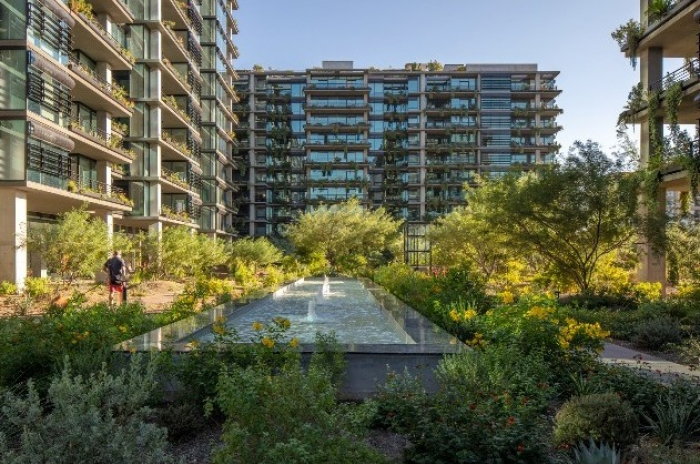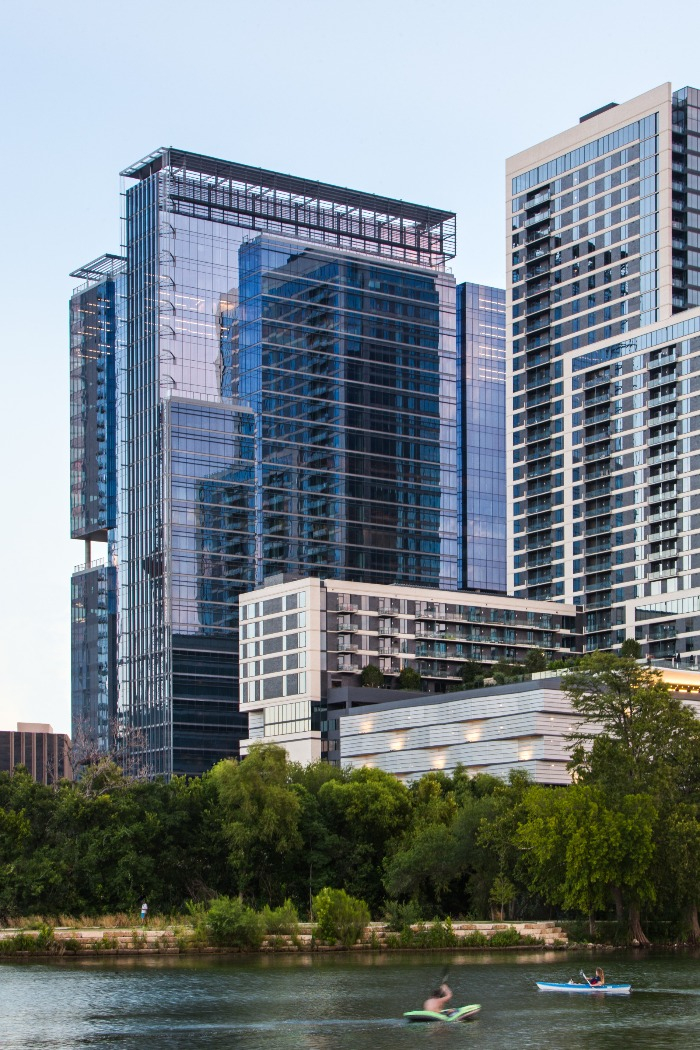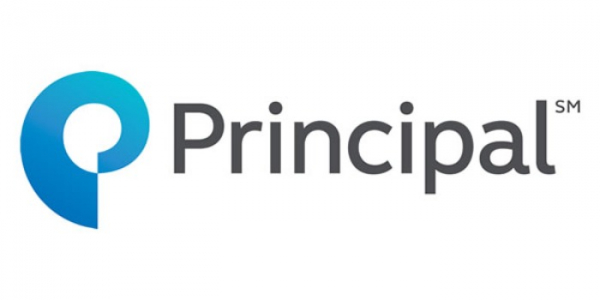Development will outperform in post-COVID era: Principal Real Estate
Premium for investing in value-add has declined, rendering the risk-return relationship less attractive, Todd Everett says
By Jul 22, 2022 (Gmt+09:00)
LG Chem to sell water filter business to Glenwood PE for $692 million


Kyobo Life poised to buy Japan’s SBI Group-owned savings bank


KT&G eyes overseas M&A after rejecting activist fund's offer


StockX in merger talks with Naver’s online reseller Kream


Mirae Asset to be named Korea Post’s core real estate fund operator



Real estate is in the global investor spotlight amid skyrocketing inflation. However, not all property sectors or locations will offer the same inflation mitigation benefits, said Todd Everett, executive director and CEO at Principal Real Estate Investors.
Everett highlighted commercial real estate as an area of opportunity as it has historically performed well during inflation.
Also, employing specific strategies such as focused development will be more important in the US as generational changes in the American population are creating a sustained demand for the residential sector, he said.
Everett noted development strategies will not only continue to offer attractive absolute and relative returns as low cap rates and powerful rental growth will offset cost and timing considerations, but also allow tailored solutions to meet the expanding breadth of evolving ESG needs.
The premium for investing in value-add has declined, rendering the risk and return relationship less attractive, he added. The following is an edited transcript of The Korea Economic Daily's July 21 interview with Everett.
▲ What are the major long-term structural changes shaping real estate markets and how has the pandemic impacted these changes?
“Demographics, infrastructure, globalization, innovation and technology, which Principal Real Estate refers to as DIGITAL themes, have become very important in driving the growth of formerly niche, or non-traditional, property types. As the pandemic transformed the outlook for occupiers, the capital markets are propelling these property types into the mainstream.”
“These DIGITAL themes manifest themselves in both the traditional and non-traditional real estate property types. Increasingly, non-traditional properties have become the beneficiaries of these demand drivers. While these factors can impact every aspect of investing, they are particularly relevant to the real estate markets.”

“Investors need to be mindful that not all property sectors, or locations, will offer the same performance or the same inflation mitigation benefits. We recommend focusing on a mix of emerging growth and traditional property types in metro areas aligned with long-term structural drivers that include technology and strong demographic growth profiles.”
“One area of opportunity is commercial real estate. Although commercial real estate is not inflation-proof, historically, it has a record of performing well during periods of higher-than-average inflation, owing to its ability to generate and increase income returns for investors given the nature of leases that are often tied to measures of inflation.”
▲ What is your outlook on the real estate market? Which property types will benefit from strong demand tailwinds?
“Demand fundamentals are reasonably balanced within commercial real estate although the impact of the pandemic is still seen in office sector occupancy levels. We believe that property types with resilient, embedded demand drivers – for example, data centers, medical offices, manufactured housing – may remain well supported by tenants and investors.”
▲ In the expected stagflation market in the US going forward, what specific sectors would Principal recommend to its investors and why?
“We believe it is important to focus on resilient (DIGITAL) drivers of demand as well as specific strategies such as focused development to potentially generate risk-adjusted performance."
"For example, the development offers outsized opportunities in the US housing market. Generational changes to the US population are intersecting with impacts from COVID-19, creating sustained demand in the residential sector that may have long-term tailwinds.”
"A substantial shortage of housing, coupled with rising affordability issues, is generating significant demand for rental real estate. The demand has expanded beyond traditional apartments to include single-family homes, manufactured housing, and built-to-rent units.
"The demand for residential real estate has also shifted into high gear among investors who recognize the acute need for housing and the increasingly broad swathe of options the sector can offer renters.”
“We believe that development strategies offer attractive risk-adjusted opportunities within the residential sector by generating return premiums over the core and stabilized assets. Further, a development-oriented approach offers the ability to tailor assets to meet shifting tenant profiles, including more ESG-related amenities, and potentially meet and exceed inflationary pressures by covering rising material and labor costs via increased stabilized asset values.”
▲ Given that inflation is leading to higher construction costs, why has Principal stated a strong preference for development over buying existing properties today? Does this approach vary by property type or market?
“As investors search for higher-yielding investment solutions, many are turning to opportunities in the development space given that value-add returns have also seen significant erosion. The premium for investing in value-add has declined thereby rendering the risk and return relationship less attractive.”
“We believe development strategies continue to offer attractive absolute and relative returns. Core industrial and multifamily assets offer a relative value opportunity, given the range of their current cap rates."
"While supply and labor shortages have extended development timelines and increased appropriate underwriting contingencies, stronger capital market demand has more than compensated experienced developers for these incremental risks. Low cap rates and powerful rental growth continue to offset cost and timing considerations.”
“Development strategies offer the ability to tailor new build assets to evolving and growing ESG demands and standards from occupiers and buyers that have been catalyzed by COVID-19, climate change and expanding regulatory requirements.”

▲ Interest in ESG investing has grown exponentially over the last few years. Can you tell us about Principal Real Estate Investors’ commitment to ESG? And what are the sustainability efforts from a real estate perspective?
"We are keenly aware of the role the financial industry can play to support a more sustainable world and future. Principal Real Estate has had an overarching ESG framework, the Principles for Responsible Property Investing, since 2013. It guides our investment management practices, which is used by Principal and our property management and joint venture partners.”
“The framework is based on our comprehensive policies, governance framework, reporting practices and research. Through our research, we have identified five primary areas of ESG focus which guide our decision making: Environmental Performance, Occupant Experience, Community Impact, Climate Resilience, and Managerial Excellence.”
“Further, this framework outlines our ESG expectations throughout the property lifecycle, starting with the analysis of key ESG factors during due diligence, an iterative performance improvement cycle during operations and disposition practices such as sharing key ESG data. As trends and best practices evolve, we continually look to refine the platform.”
▲ What makes Principal Real Estate different from its peers when selecting and evaluating green properties? And how does Principal measure ESG factors differently from others?
“We thoroughly evaluate ESG issues from the earliest stages of our new property and existing asset acquisition pre-investment process. As part of the underwriting process, we consider ESG issues that are unique to each site and local market resilience, from both an economic and regulatory perspective.”
“Relying on local market expertise provided by our property management and development partners, in addition to our regional asset management and engineering teams, allows greater insight and focus on key local market conditions.”
“One area to highlight is how we assess physical and transition climate risk as part of our due diligence process for new developments and acquisitions. High risks identified are considered for each deal by the engineer, acquisitions and asset management teams and experts as needed such as the Property Condition Assessment (PCA) consultant to identify immediate design changes or capital expenditures.”
“From a policy and legal perspective, an increasing number of jurisdictions and regional governments are adopting climate action plans, renewable energy portfolio standards, or other environmental regulations targeting greater energy efficiency and reduced carbon emissions associated with commercial buildings."
"The climate risk report includes a transition risk rating for each asset’s estimated value at risk (VaR) as a result of anticipated regulations in the next 15 years. In addition, our analysis process helps identify properties exposed to specific energy disclosure or performance regulations.”

“Building owners seeking to benefit from green building investments often choose to obtain credible green building certifications. While there is a cost to such certifications – both the application fees and the cost of implementing the required measures to meet the standards – third-party certifications provide a consistent framework with independent verification of integration of environmental and social standards at the property.”
"Certification standards also provide guidelines to building owners that allow them to benefit from significant energy savings. For example, the US Green Building Council (USGBC) finds that LEED-certified buildings consume 25% less energy than equivalent commercial buildings."
"Sustainability research in 2021 found that buildings with green ratings benefitted from average rental premiums of 11% for LEED-certified buildings and green buildings tend to attract more tenants and boost occupancy rates."
“Investors may benefit from higher rents and increased demand by incorporating green building elements into their developments, renovations and operating plans. So it is not surprising that green buildings with credible certifications such as LEED have been found to sell for 21% more per square foot than equivalent buildings over the last three years, depending on the market. Buyers value the energy-saving upgrades, on-site renewable energy installations, and healthier interior conditions.”

The leading real estate manager serves 550 clients from 31 countries worldwide. Its parent group Principal Global Investors is a multi-investment firm that delivers investment solutions for public and private pension funds, foundations and endowments, central banks, insurers and others.
Principal Global Investors manages $579.4 billion in assets as of end-March 2022, on behalf of over 800 institutional clients in over 80 countries.

Todd Everett is the executive director and CEO of Principal Real Estate Investors. He is responsible for leadership of all global commercial real estate operations, including the business lines in private debt, private equity, CMBS and REITs.
In addition, he is a board member for Principal Real Estate Europe and chair of the management committees for all US real estate operations.
Everett is also the leader of the Real Estate Strategic Working Group and chairman for many of the organization's investment committees. He joined the organization in 1985 and has served in a wide array of investment production, portfolio management and leadership positions.
Everett is a graduate of the University of Nebraska with a degree in finance and is a former chair of the CRE Finance Council's Portfolio Lenders Forum, a member of the North American Real Estate Investment Managers Association (NAREIM) and the Real Estate Roundtable.
Write to Ji-Hye Min at spop@hankyung.com
Jihyun Kim edited this article.
-
 Real estateCommercial real estate market in Seoul shrinks in H1 2022
Real estateCommercial real estate market in Seoul shrinks in H1 2022Jul 12, 2022 (Gmt+09:00)
1 Min read -
 ASK 2022Korean real estate investors look to secure liquidity post-pandemic
ASK 2022Korean real estate investors look to secure liquidity post-pandemicMay 25, 2022 (Gmt+09:00)
5 Min read -
 Real estateKB Asset buys Belgian office towers for $654 million
Real estateKB Asset buys Belgian office towers for $654 millionMay 13, 2022 (Gmt+09:00)
1 Min read -
 Real estateKorea's top real estate managers bulk up assets in COVID-19
Real estateKorea's top real estate managers bulk up assets in COVID-19May 13, 2022 (Gmt+09:00)
3 Min read -
 Real estateIGIS, KKR to found JV for real estate investment in Korea
Real estateIGIS, KKR to found JV for real estate investment in KoreaApr 29, 2022 (Gmt+09:00)
2 Min read


